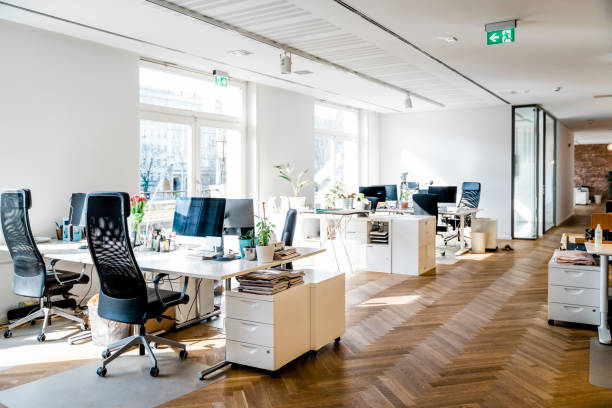In the realm of workplace essentials, the office chair reigns supreme as the unsung hero of productivity, comfort, and ergonomic design. Beyond its utilitarian purpose, the office chair embodies a synergy between form and function, reflecting the evolving needs of modern workspaces and the well-being of those who occupy them. Join me as we delve into the world of office chairs, exploring their evolution, impact on health and productivity, and the delicate balance between comfort and style.
A Legacy of Lumbar Support: The Evolution of Office Chairs
The journey of the office chair traces back to the 19th century when industrialization demanded solutions for prolonged sitting during work hours. The earliest designs focused on basic functionality, with wooden frames and minimal padding. However, as the understanding of ergonomics evolved, so too did the office chair.
The mid-20th century brought innovations such as adjustable height, swivel mechanisms, and lumbar support, laying the foundation for modern ergonomic design. Today, office chairs are a symphony of engineering and comfort, with features like adjustable armrests, reclining mechanisms, and breathable materials that cater to the needs of diverse body types and work styles.
The Ergonomic Imperative: Balancing Comfort and Health
In an age where sedentary work dominates, the importance of ergonomic office chairs cannot be overstated. Prolonged sitting has been linked to various health issues, including musculoskeletal disorders, poor circulation, and even mental fatigue. The ergonomic office chair serves as a frontline defense against these risks, providing proper support for the spine, promoting good posture, and reducing strain on the body.
Key ergonomic features include adjustable lumbar support to maintain the natural curve of the spine, adjustable seat height to accommodate different leg lengths and desk heights, and seat depth adjustment to prevent pressure on the thighs. Additionally, ergonomic office chairs often feature breathable mesh backs to promote airflow and prevent discomfort from prolonged sitting.
The Intersection of Comfort and Style
While functionality is paramount, the modern office chair also recognizes the importance of aesthetics in the workplace. Gone are the days of sterile, utilitarian designs; today’s office chairs seamlessly blend comfort with style, becoming focal points of office decor. From sleek, minimalist designs to bold, statement-making pieces, office chairs come in a variety of styles to suit every taste and office environment.
Materials play a significant role in defining the aesthetic appeal of office chairs. Leather upholstery exudes elegance and sophistication, while fabric options offer versatility and a pop of color. Mesh-backed chairs strike a balance between modernity and comfort, providing a contemporary look while promoting airflow and breathability.
Boosting Productivity: The Impact of Office Chairs on Work Performance
Beyond physical comfort, office chairs play a crucial role in enhancing work performance and productivity. A well-designed ergonomic chair can reduce discomfort and fatigue, allowing employees to focus on tasks for longer periods without distraction. By promoting proper posture and providing adequate support, office chairs contribute to overall employee well-being and job satisfaction.
Moreover, ergonomic office chairs have been shown to decrease the frequency of work-related injuries and absenteeism, resulting in cost savings for employers and improved morale among employees. Investing in quality office chairs demonstrates a commitment to employee health and productivity, yielding long-term benefits for both individuals and organizations.
Sustainability and Corporate Responsibility
In recent years, sustainability has become a focal point for businesses seeking to minimize their environmental footprint. Office furniture manufacturers have responded by incorporating eco-friendly materials and manufacturing processes into their designs. Recycled materials, renewable resources, and energy-efficient production methods are increasingly prevalent in the office furniture industry, aligning with corporate sustainability goals and consumer preferences.
The Future of Office Chairs: Innovations on the Horizon
As technology continues to advance, the future of office chairs holds exciting possibilities for innovation. Smart office chairs equipped with sensors and integrated software could provide real-time feedback on posture and sitting habits, helping users maintain optimal ergonomics throughout the workday. Additionally, advancements in materials science may lead to the development of even more sustainable and durable office chair options, further reducing environmental impact.
In Conclusion: The Throne of Modern Workspaces
The office chair, in all its ergonomic glory, represents the nexus of comfort, productivity, and style in the modern workplace. From its humble beginnings to its current status as a symbol of workplace well-being, the office chair has evolved alongside our understanding of ergonomics and the changing nature of work. As we look to the future, the office chair will continue to play a vital role in shaping healthy, productive, and sustainable work environments, ensuring that employees can thrive in the throne of their modern-day kingdoms.
















Add Comment